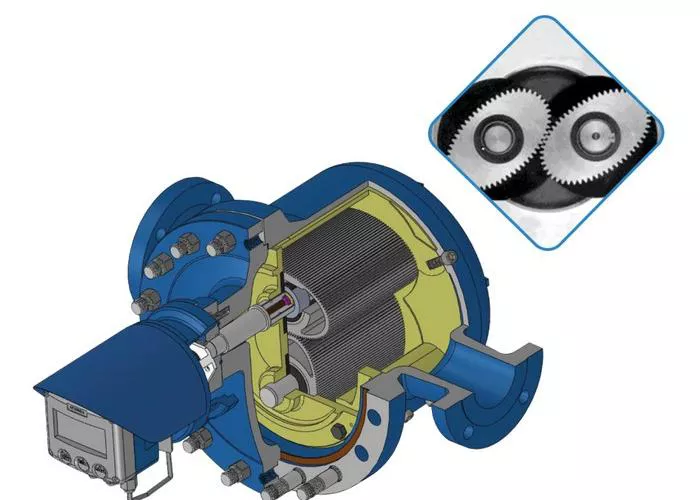Oxygen flowmeters are essential medical devices that regulate the flow rate of oxygen delivered to patients. Their precise functioning ensures that patients receive the correct oxygen concentration, which is critical in both clinical and emergency settings. Among the various types of oxygen flowmeters, one particular kind is known for its operational limitation — it can only be used in an upright position. Understanding this characteristic is vital for healthcare professionals to ensure patient safety and device accuracy.
What Are Oxygen Flowmeters
Oxygen flowmeters serve the fundamental role of measuring and controlling the rate of oxygen supplied to a patient. These devices are connected to oxygen sources such as tanks, concentrators, or pipelines and are commonly found in hospitals, clinics, and emergency medical services. They convert raw oxygen pressure into a controlled flow rate, expressed in liters per minute (L/min), which is essential for respiratory therapy.
Several types of oxygen flowmeters exist, each with unique designs, advantages, and limitations. The most common include:
- Thorpe Tube Flowmeters
- Bourdon Gauge Flowmeters
- Dial Flowmeters
Among these, the Thorpe Tube Flowmeter stands out due to its sensitivity to orientation and positioning.
What Is the Thorpe Tube Flowmeter
The Thorpe tube flowmeter, often referred to as a variable area flowmeter, consists of a tapered transparent tube with a float inside. Oxygen enters at the bottom and flows upward, lifting the float. The position of the float within the tube corresponds to the flow rate, which is read against a calibrated scale on the tube.
A critical feature of the Thorpe tube is that it relies on gravity and buoyancy principles to function correctly. The float must rise vertically within the tube to give an accurate flow rate reading, making the upright position mandatory during operation. Using it in any other orientation compromises the float’s position and, thus, the flow reading.
Why Can the Thorpe Tube Flowmeter Only Be Used Upright?
The design and physics behind the Thorpe tube make it orientation-sensitive. The float inside the tapered tube moves based on the force of oxygen pushing upward against gravity. If the device is tilted or placed horizontally, gravity acts differently on the float, causing it to stick or read inaccurately.
Key reasons for its upright-only usage include:
- Gravity Dependence: The float’s vertical position indicates the oxygen flow rate, which can only be accurate if gravity pulls it down correctly.
- Calibration Specificity: The scale on the tube is calibrated assuming the device is vertical.
- Avoiding Misreading: Any tilt can cause the float to rest against the tube wall, resulting in false readings.
- Safety Concerns: Incorrect flow readings can lead to improper oxygen delivery, endangering patients.
Thus, healthcare providers must always ensure that Thorpe tube flowmeters remain upright during use.
Other Types of Oxygen Flowmeters and Their Orientation Requirements
Unlike the Thorpe tube, some flowmeters can function correctly even when not upright. Below are brief descriptions and orientation considerations for other types:
Bourdon Gauge Flowmeters
- Utilize a coiled tube that uncoils under pressure.
- Do not depend on gravity for operation.
- Can be used in any position, including horizontal or inverted.
- Ideal for portable oxygen sources where orientation varies.
Dial Flowmeters
- Use a needle and dial gauge system.
- Orientation-insensitive.
- Commonly used in ambulances and portable tanks.
Electronic Flowmeters
- Employ sensors and electronic controls.
- Can function in any position.
- Increasingly popular due to their precision and flexibility.
Understanding the orientation sensitivity of different flowmeters helps in selecting the right device for specific clinical environments.
Clinical Implications of Using Thorpe Tube Flowmeters Upright
Proper oxygen delivery is crucial for patient safety. Misuse or misreading of flowmeters can lead to hypoxia or oxygen toxicity. When using a Thorpe tube flowmeter:
- Always place it upright on a flat surface or hold it vertically.
- Avoid tilting or laying the device horizontally.
- Regularly inspect for damage or dirt that may affect float movement.
- Confirm the flow rate reading matches the prescribed oxygen therapy.
In emergency situations, when quick decisions are necessary, understanding these usage constraints ensures safe oxygen administration.
Best Practices for Using Thorpe Tube Flowmeters
To maximize safety and accuracy when using a Thorpe tube flowmeter, healthcare professionals should:
- Check Orientation: Confirm the flowmeter is perfectly vertical before operation.
- Secure Mounting: Use brackets or holders that maintain an upright position.
- Routine Calibration: Perform regular checks to verify accuracy.
- Training: Ensure all staff are trained in the proper handling of flowmeters.
- Patient Monitoring: Continuously monitor patients for signs of inadequate oxygenation.
These steps help reduce risks associated with incorrect flowmeter use.
Troubleshooting Common Issues with Thorpe Tube Flowmeters
Improper use of the Thorpe tube can lead to several problems, including:
- Float Sticking: Caused by dirt or scratches inside the tube.
- Inaccurate Flow Readings: Due to tilted positioning or damage.
- Leaks: Resulting from loose connections or damaged seals.
To troubleshoot:
- Always clean the tube carefully.
- Check that the flowmeter is vertical before use.
- Inspect for cracks or damage and replace if necessary.
- Verify oxygen source pressure is within specified range.
Addressing these issues promptly ensures the device functions reliably.
Conclusion
The Thorpe tube oxygen flowmeter is the device that can only be used upright. Its design relies on gravity to position the float accurately and provide correct flow readings. In contrast, other oxygen flowmeters such as the Bourdon gauge and dial types are orientation-independent and can be used in multiple positions. Proper usage of the Thorpe tube flowmeter — always keeping it upright — is essential to delivering safe and effective oxygen therapy.

